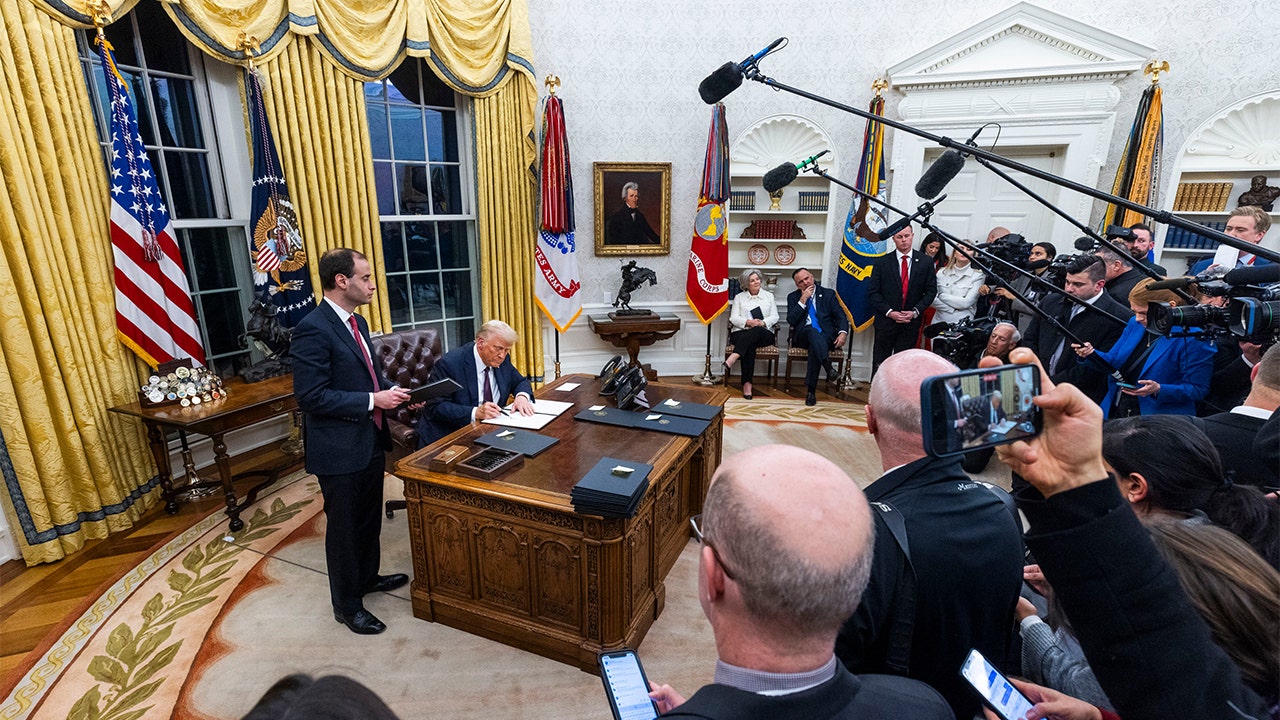Rachel Reeves will on Monday call on sceptical Labour MPs to back her plans to boost the UK economy, including a highly contentious proposal to expand Heathrow airport.
The chancellor is facing criticism from some in her party for allegedly siding with business over consumers and for backing a third runway at Britain’s busiest airport, amid fears it could hit the government’s environmental objectives.
But Reeves will seek to face down her critics when she meets the Parliamentary Labour party on Monday, telling MPs that without growth she will be unable to fund the improvements to public services they want.
Reeves, who met investors at the World Economic Forum in Davos this week, will also spend the next two days meeting chief executives in an attempt to persuade them that she has a credible growth strategy.
Many business leaders fear her policies have contributed to a stagnating economy.
On Sunday Reeves in effect confirmed that she would endorse the construction of a third runway at Heathrow when she makes a “growth” speech on Wednesday, insisting the aviation industry was becoming greener.
Asked about claims by London mayor Sir Sadiq Khan that the policy would hit clean air and net zero targets, Reeves said: “A lot has changed in terms of aviation.”
She told the BBC’s Laura Kuenssberg that more sustainable aviation fuels were becoming available, and that “a third runway will mean that instead of circling London, flights can land at Heathrow”.
Reeves said she had already agreed the expansion of London City and Stansted airports and she is also expected on Wednesday to approve expansion at Gatwick and Luton, marking a huge expansion of London airport capacity.
A third runway was first proposed by the last Labour government in 2003 on economic grounds, but subsequent Conservative administrations tried and failed to progress the scheme.
Khan and environmental groups have long opposed it, citing the UK’s legally binding target to reach net zero carbon emissions. But this week energy secretary Ed Miliband, who threatened to resign over the issue during Gordon Brown’s government, said he would not quit his role if the third runway was approved.
Paul McGuinness, chair of the No Third Runway Coalition, said: “Expansions at other London airports undermine the case for Heathrow’s uniquely complicated and costly third runway, making it an even riskier, if not uninvestable proposition.”
Left-wing Labour MPs are also worried that Reeves is tilting the regulatory landscape in favour of big business and away from consumers, with one saying: “She’s throwing herself at big corporations.”
But the chancellor insisted on Sunday that without some radical changes Britain would have inadequate growth and that the government would fail to meet its target of 1.5mn new homes in this parliament.
“Too often the answer to new development has been ‘no’. But that is the attitude that has stunted economic growth and left working people worse off,” she said. “I don’t believe low growth is our destiny.”
Reeves announced new plans to speed up the construction of new homes near commuter train stations, as part of reforms under a new planning and infrastructure bill.
The Treasury said the new rules would ensure that when developers submit an application for acceptable types of schemes in key areas — such as near commuter transport hubs — the default answer would be “yes”.

Reeves also backed a regeneration project around Old Trafford in Manchester, which has been championed by Greater Manchester mayor Andy Burnham.
The Treasury said it would see “new housing, commercial and public space as a shining example of the bold pro-development model that will drive growth across the region”.
Manchester United have plans to rebuild or redevelop Old Trafford, which city leaders claim could drive one of the UK’s “biggest ever urban regeneration projects”.
The Premier League club will decide by the end of this season whether to build a new 100,000-capacity ground, creating the country’s biggest stadium, or upgrade and expand the existing one.
Burnham dubbed the proposal “the largest opportunity for urban regeneration” since the 2012 London Olympic Games.

























/cdn.vox-cdn.com/uploads/chorus_asset/file/25835602/Switch_DonkeyKongCountryReturnsHD_scrn_19.png)






